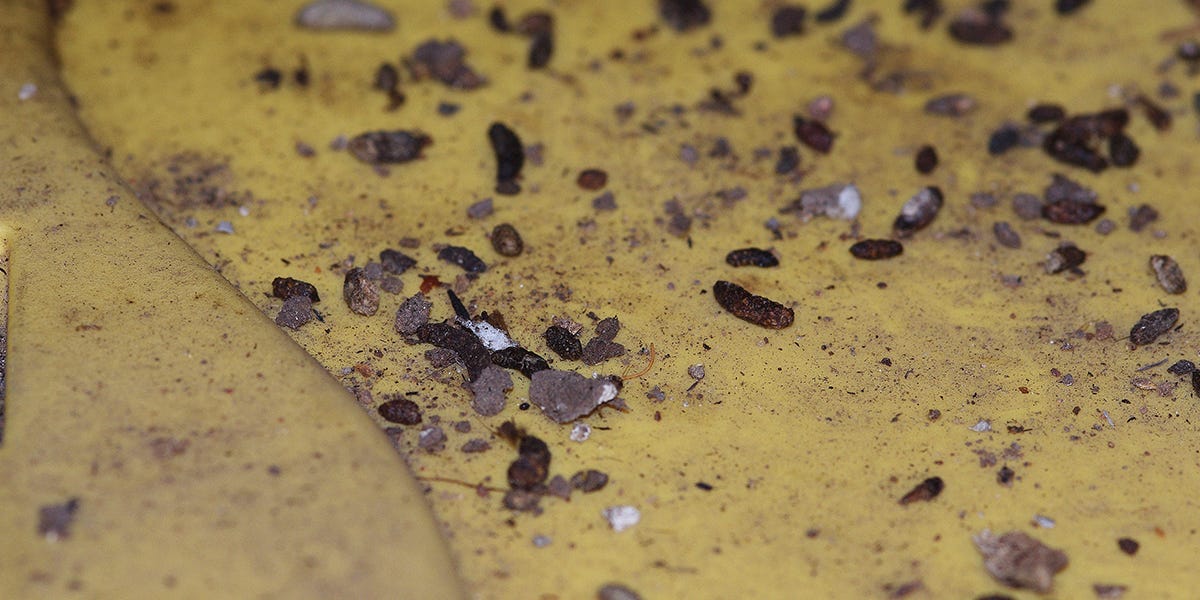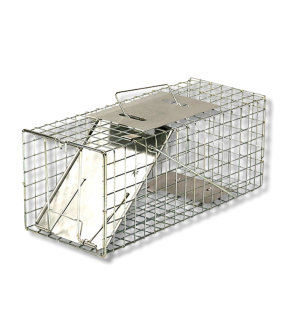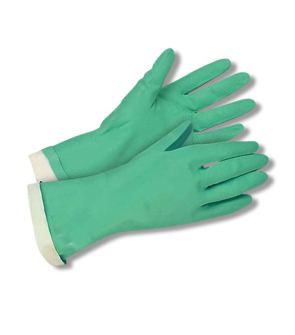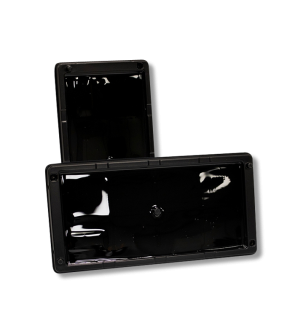Gain access to personalized product screening, the best pricing, rewards, and more!
Most Effective Products
How to Identify Pest by Droppings
This article is a general DIY guide to identifying droppings made by various pests. By following this information and using the recommended products, you can control your pest problem. For your safety, make sure to wear the appropriate personal protective equipment (PPE), such as gloves and masks, when handling or examining pest waste.
When it comes to effectively controlling pests, early prevention is the key. It is not uncommon for homeowners to examine signs of damage as an early indication of pests, but no signs of wear and tear do not mean there are none. Pests can travel behind walls and underneath furniture to evade detection. One thing these pests cannot hide is their excrement.
Pest droppings are an easy sign of an infestation inside or outside your home. Depending on the pest, defecations are usually left along the boundaries of their territory or site of activity, the edge of the house and yard, the middle of the yard, and sometimes within the attic or basement of a home. Pest feces is an early warning of potential population outbreaks and a safety hazard since fecal matter can potentially spread diseases.
While physical identification of a pest or its damages is the normal go-to method, this can give the pest enough time to increase the size of its population and activity within your property. Read our expert DIY guide to animal or insect droppings, including how to identify the pest it came from and what recommended products to use to remove these invaders.
Raccoon Feces

If you have a potential raccoon infestation, the most likely places this pest will invade are the attic and basement. Raccoon feces tend to be large, ranging from 2 to 3 inches long, and similar to medium-sized dog droppings, but they have a darker coloration, tubular shape, and granular texture.
Another easy way to differentiate between dog and raccoon feces is to examine the droppings, which may contain seeds, berries, and fur. Be cautious when inspecting raccoon feces, as they have the highest potential of carrying harmful diseases or parasites such as roundworms.
Raccoons are prone to repeatedly defecate in the same area (known as latrines) for extended periods. These latrines are a community bathroom site for multiple raccoon pests, which leads to high piles of feces and a concentration of odor. In the outdoors, these sites are seen around the bases of trees, between tree forks, underneath porches and woodpiles, tree limbs, and raised horizontal surfaces like large rocks, fall logs, and stumps.
Opossum Feces

The feces of raccoons and opossums are similar, although opossums will taper at the end and have a curled shape. Unlike raccoons, opossums will defecate in various spots as they travel across your attic and basement.
The coloration of their droppings will range from brown to some yellow or white hues. It is not uncommon to mistake their droppings for that of a small to medium-sized dog as they will also be segmented into 2 to 3 droppings.
Opossums are omnivores that mainly feed on insects, frogs, rodents, and occasional fruit, nuts, plants, and grains. However, these pests are more likely to ingest meat or human food than grains, so their feces will not contain as many seeds as raccoons'.
As a result, the texture of opossum waste is smoother and rounded in shape. They will measure 3/4 of an inch in diameter and reach up to 2 inches in length.
Mouse Feces

Droppings and other visible damages are similar between deer mice and house mice. These two rodents are the most common mice species that invade homes and yards. The house mice are more inclined to invade the interior of your home and infest the kitchen, garage, and basement areas.
Deer mice have the ability to travel into a home but are commonly found within wooded and agricultural areas. Farms, homes, and businesses surrounding these sites have a larger possibility of deer mice infestations than house mice.
House mice and deer mice are very prolific in the amount of waste created and can be seen within drawers, inside storage containers, under sinks and appliances, and in other hard-to-reach areas.
House mice and deer mice droppings will be measured to a quarter of an inch long, similar to the shape and size of a grain of rice. They are dark to light brown colored with a smooth appearance. The difference between these pests is that house mouse feces resemble a rice grain, and deer mouse feces are more pointed at the end.
Rat Feces

Some homeowners feel there is no difference between rat and mouse droppings. However, a closer examination of the size and location of the fecal matter will help determine whether it is a rat control or mouse control issue. In contrast to mouse droppings, rat droppings appear larger in length and broader in width.
The fecal matter of rats will vary with each species. For example, Norway rats have blunt ends measuring 3/4 inches long, and roof rats have pointed ends measuring 1/2 inches long. Like mouse droppings, rat droppings have a pellet shape that is just slightly larger.
These droppings are normally black, with a shine if fresh. Due to rats' size, they cannot easily enter smaller voids like mice's, so larger spaces such as behind or around furniture and objects, along the walls of garages, sheds, attics, basements, hallways, and underneath kitchen appliances are most likely to be infested. Rats will scatter their waste sporadically as they travel throughout your home and yard.
Cockroach Feces
Cockroach waste often gets confused with rat and mouse stools due to the similarity in texture and size. Depending on the size of the roach will determine the size of its excrement.
Small cockroach droppings, like those of the German cockroach, resemble the texture of black ground pepper, coffee grains, or small grains. Larger species, like the American cockroach, are slightly bigger in length, more solid, and shaped like a grain of rice or pellet. Pellets will appear dark brown or black, while smaller cockroaches' excrement coloration is black.
The pellets of larger cockroach species are bigger than mouse droppings and have ridges running along the side of their waste, whereas rats and mice are smooth-edged. Cockroaches create fecal matter that may resemble a scattered pattern since these pests create waste wherever they travel.
They can easily invade the inside of cabinets and drawers, the top and underneath of furniture or appliances, corners of rooms, and along the baseboard of walls. Unfortunately, cockroaches heavily depend on food and moisture, which makes your food, tableware, sinks, countertops, and plumbing susceptible to pest activity.
Like most pests in this article, cockroach excrement can potentially carry several harmful diseases. However, it should be noted that cockroaches could have a broader range of these pathogens since they ingest their own and other species of pests' fecal matter.
Termite Feces
Many homeowners clean termite droppings, considering them to be piles of dust or sawdust. This happens because of the fine, grainy, textured appearance of termite dung. However, upon closer inspection of these piles of frass, you can see the difference between each species of termite and regular piles of wood dust material.
The excrement of drywood termite appears as tiny, round-shaped capsules with six rounded sides. The texture of these pellets will be smooth and hard to the touch.
Regarding subterranean termites, their waste will have a moist texture as it is used to construct mud tunnels that run up walls and a home foundation. While on the contrary, drywood termites will push their droppings out of their tunnels to form piles that look like sawdust.
Frass from drywood termites may be found directly underneath these pests' exit holes. Drywood termites are known to create their homes within attics, eaves, and soffits around the exterior of homes and wood base structures. You may find these frass or exit holes in decaying trees and wooden window frames near your yard. The color of drywood termite feces varies from light brown to black, depending on the type of wood the termite is ingesting.
Squirrel Feces
Squirrels and mice leave roughly similar droppings, about 3/8 inches long, while rodents are slightly larger at 3/4 inches. Typically, droppings from these pests have a cylindrical pellet-like shape with rounded tips. Depending on when the waste was created, the coloration is mainly black but could vary from light brown to reddish brown.
Fresh squirrel feces have a moist and smooth texture with rounded edges and a wide center.
Rat and mouse droppings are more narrow and have differentiating pointed ends. One way to separate these pests is to examine the location and amount of droppings.
Most of the time, squirrel feces are found in attics, crawlspaces, tree bases, bird feeders, and on the edges of rooms. The amount of waste depends on the number of squirrels inhibiting the area or the amount of days that have passed for the infestation.
Squirrels produce a high amount of excrement like rodents but will appear similar to clusters, whereas rodents are scattered across multiple surfaces.
Lizard Feces
Lizard droppings look like most species of bird droppings-mushy with a white-like end. However, lizard waste will vary between liquid, solid, or soft, whereas birds or snakes are usually more liquid in texture and shape.
When firm, these fecal matter pellets are moist in appearance. Various lizard species disperse a combination of fecal and urinary matter at the same time, which gives them a soft to somewhat firm form. One thing that is definite in each lizard species is the two parts of the waste. One part of the waste will be brown or black, while the other half is white to yellowish.
The brown-to-black portion represents the lizard's manure, and the yellow-to-white half is crystallized urine at the end of the feces. Like other species of reptiles, Lizards perform this function to maintain moisture within their bodies more efficiently. Typically, lizard excrement will be found outside the home near light fixtures, porches, rocks, plant leaves, and horizontal to vertical surfaces like walls or fence posts. It is common to find this pest fecal matter on the walls, window frames, and light fixtures inside your home.
Key Takeaways
How to Differentiate Pest Droppings
- Examine the quantity, shape, texture, and location of the animal, reptile, and insect feces. Animal feces are prone to be in medium-sized voids, attics, basements, and around tree baselines. Insect and reptile pests will be found in hard-to-reach areas, within walls, and underneath plants or porches.
Droppings that Are Similar to Rodents
- Squirrel and cockroach waste are the most similar in appearance to rodent feces. Squirrel droppings are smaller than rat feces and have a rounded end, whereas rodents have a tapered end. Cockroaches have a higher chance of being mistaken for mouse waste since they are the same size and shape. The edges of cockroach waste are rigged, while rodents' edges are smooth.
How to Treat Pests Creating Waste in Homes and Yards
- You are limited to humane live traps and glue boards without physical identification of the pest. You may use Solutions Live Animal Traps or Solutions Professional Rat/Mouse Glue Tray for outdoor pest activity. We recommend using a Solutions Professional Rat/Mouse Glue Tray for indoor treatments. Ensure these traps are not in the pathways of children or domestic animals.













